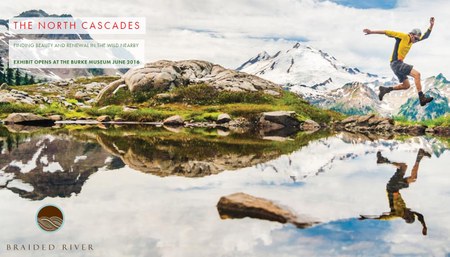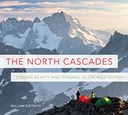
How do you bring the wild inside? This was one question the Burke Museum and Braided River, the conservation imprint of Mountaineers Books, tackled as they worked together to create a museum exhibit about Washington's North Cascades, based on our 2014 title about this spectacular natural region.
One key challenge was to design an exhibit that would appeal equally to people who were familiar with the North Cascades as to those those who have not yet visited the area.
As the Burke's exhibit designer, Isabelle Heyward, explained, "With any exhibit, we want to provide multiple access points for a wide range of learning styles and prior content knowledge. The North Cascades ecosystem, and the work being done here at the Burke to explore it, provided so many opportunities to show things people both intimately familiar with the region and those who don't really plan to visit can sink their teeth into—like the ways a Coastal Tailed Frog jumps or archaeological evidence illustrating the Upper Skagit Indian Tribe's ancestors' hunting and fishing practices."
She added, "We hope that the research projects featured in the exhibit provide a layer of information that's not usually a part of an avid North Cascades visitor's experience of the region. For those who haven't visited yet, we hope that this exhibit provides an introduction to the region and stokes curiosity regarding the life forms found there. When they do visit, will they see Star Thistle, a Coastal Tailed Frog, or a Hairy Woodpecker?"
The exhibit opened June 18, and visitor feedback has been favorable.
Heyward noted that many visitors have expressed surprise about what they learned within the exhibit, "despite feeling like they were already very familiar with the region." The museum's goal was to provide dimension to what hikers and campers experience in the North Cascades, so, Heyward says, "it's exciting to think about hikers looking for Hairy Woodpecker bellies or certain types of rocks while they're out in the wilderness."
Check out the "Wild Nearby" at the Burke Museum now through February 5, 2017.
 Mountaineers Books
Mountaineers Books
